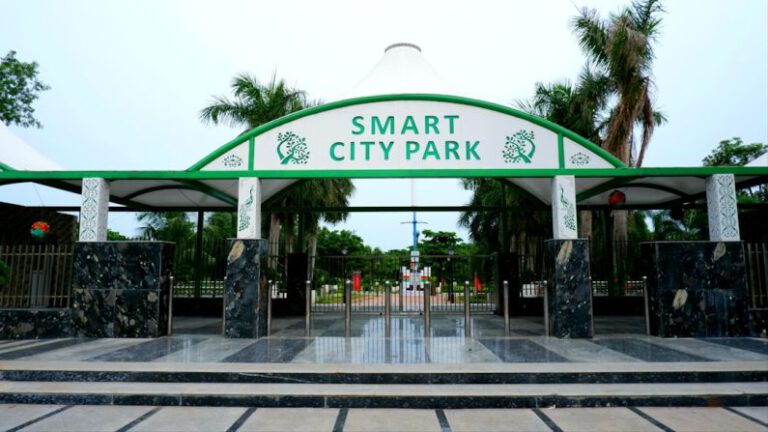How Can Technology Improve Emergency Services in Cities?
Emergencies can strike at any moment, and in urban areas where the population is dense and resources are often strained, the need for efficient emergency services is paramount. Technology has emerged as a powerful tool in enhancing the effectiveness and responsiveness of emergency services in cities. From improved communication systems to advanced data analytics, the integration of technology is transforming the way emergency services operate, ensuring quicker response times and better outcomes for those in need.
Enhanced Communication Systems
In emergency situations, effective communication is crucial to coordinating a timely response. Technology has revolutionized communication systems for emergency services, enabling real-time information sharing and coordination among first responders. Advanced communication tools such as two-way radios, mobile applications, and GPS tracking devices allow emergency personnel to communicate seamlessly, share critical information, and coordinate their efforts more efficiently. These systems ensure that responders are always connected and informed, leading to faster response times and better outcomes for those in need of help.
Data Analytics for Predictive Analysis
Data analytics play a vital role in improving emergency services in cities by enabling predictive analysis to identify trends and patterns that can help in planning for future emergencies. By leveraging big data and machine learning algorithms, emergency services can analyze historical data to predict potential risks, allocate resources more effectively, and optimize response strategies. For example, predictive analytics can help emergency services anticipate traffic patterns during peak hours or forecast areas with higher crime rates, allowing them to position resources strategically and respond proactively to emergencies.
Remote Monitoring and IoT Devices
The Internet of Things (IoT) technology has opened up new possibilities for enhancing emergency services through remote monitoring and connected devices. IoT devices such as sensors, cameras, and drones can provide real-time data on various aspects of emergency situations, enabling responders to assess the situation more accurately and make informed decisions. For instance, IoT devices can monitor air quality during a fire, detect structural weaknesses in buildings during earthquakes, or track the location of individuals in distress, providing valuable insights to first responders and helping them act swiftly and effectively.
Mobile Apps for Citizen Engagement
Mobile applications have become a valuable tool for citizen engagement in emergency situations, allowing residents to report emergencies, receive alerts, and access critical information in real-time. Emergency service apps enable users to call for help with the touch of a button, provide their location to responders, and receive updates on the status of their emergency request. Moreover, these apps can also offer preparedness tips, emergency contact information, and evacuation routes, empowering citizens to take proactive measures to protect themselves during emergencies.
Integration of AI and Robotics
Artificial Intelligence (AI) and robotics are revolutionizing emergency services by automating tasks, enhancing decision-making processes, and improving response times. AI algorithms can analyze vast amounts of data to identify patterns and anomalies, helping emergency services detect emergencies early and allocate resources efficiently. Robotics, on the other hand, can be deployed for tasks such as search and rescue operations, hazardous material handling, and medical assistance, reducing the risk to human responders and improving overall response capabilities.
Empowering First Responders with Wearable Technology
Wearable technology such as smart helmets, body cameras, and biometric sensors are empowering first responders with real-time data and situational awareness to enhance their safety and effectiveness in emergency situations. Smart helmets equipped with augmented reality displays can provide responders with vital information such as building layouts, hazard warnings, and real-time communication feeds, improving their decision-making abilities and coordination during emergencies. Body cameras and biometric sensors, on the other hand, can capture valuable data on responder activities, vital signs, and environmental conditions, enabling better post-incident analysis and training for future emergencies.
Innovative Technologies for Disaster Management
In addition to improving day-to-day emergency services, technology is also playing a crucial role in disaster management by enhancing preparedness, response, and recovery efforts. Innovations such as AI-powered risk assessment tools, predictive modeling for natural disasters, and drone-based damage assessment systems are revolutionizing the way cities respond to large-scale emergencies such as hurricanes, earthquakes, and pandemics. By leveraging these innovative technologies, emergency services can better anticipate disasters, mobilize resources more efficiently, and mitigate the impact on affected populations.
Enhancing Public Safety and Resilience
Overall, the integration of technology in emergency services is transforming the way cities respond to emergencies, ensuring better public safety and resilience in the face of ever-evolving threats. By leveraging advanced communication systems, data analytics, IoT devices, mobile apps, AI, robotics, wearable technology, and innovative disaster management tools, emergency services are becoming more proactive, efficient, and effective in handling emergencies of all scales. As cities continue to grow and face new challenges, embracing technology will be key to building more resilient and responsive emergency services for the future.






